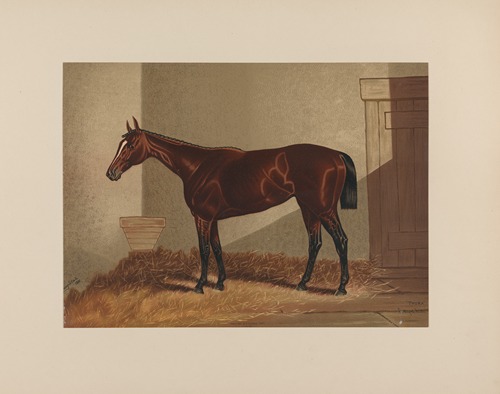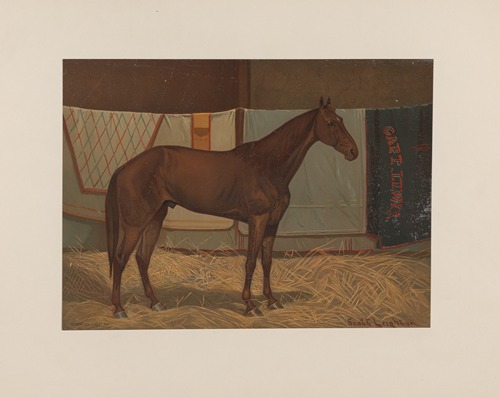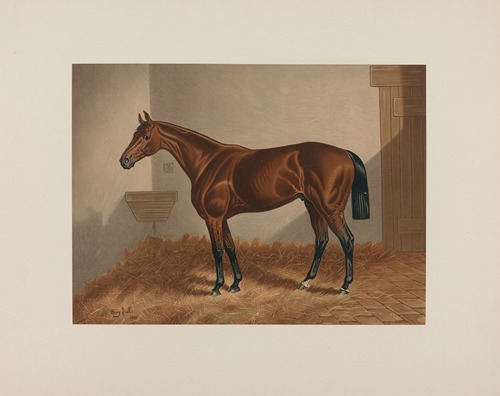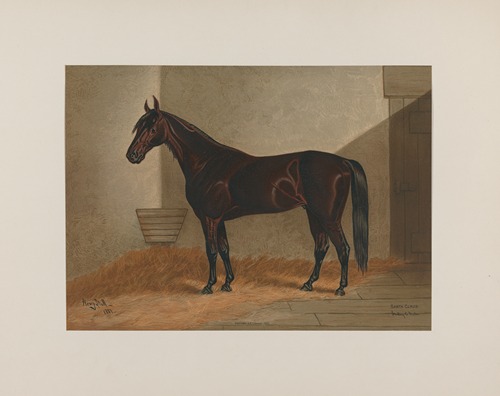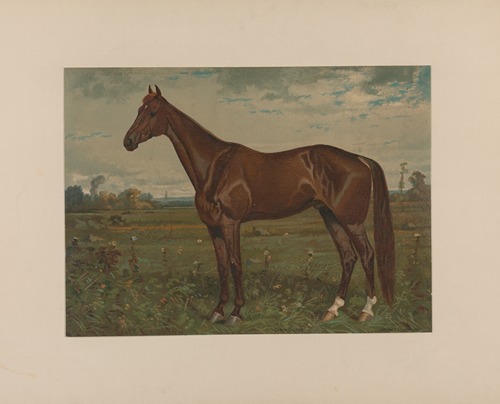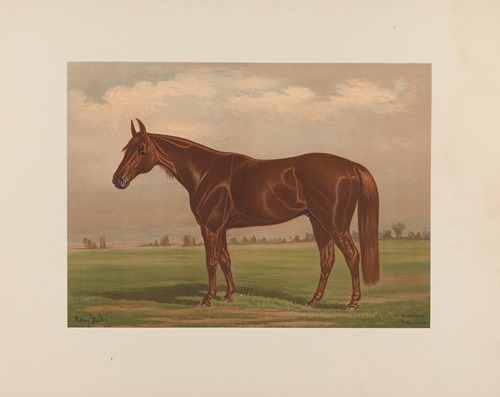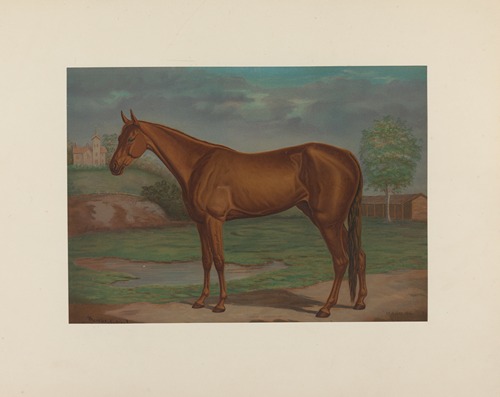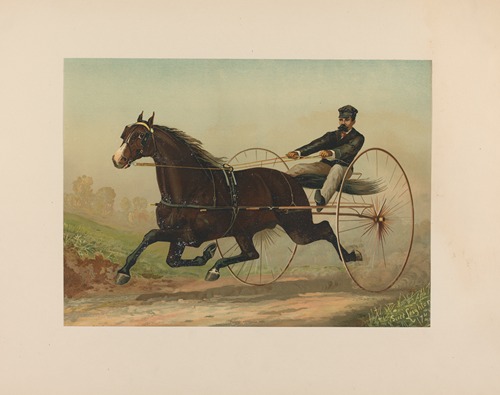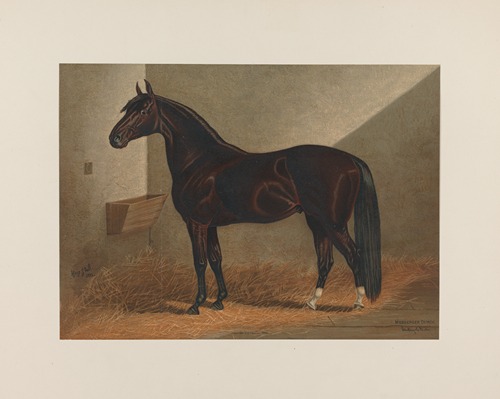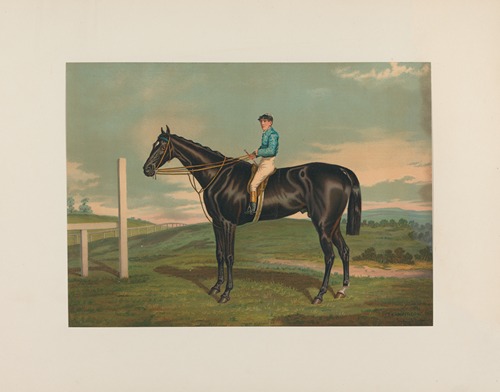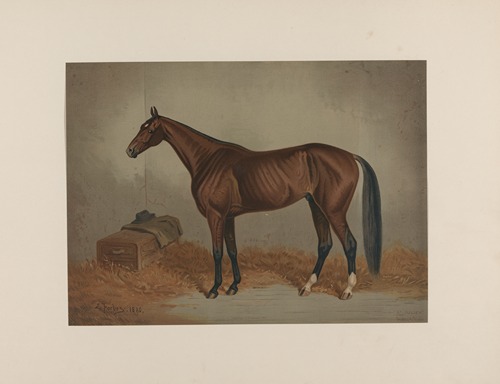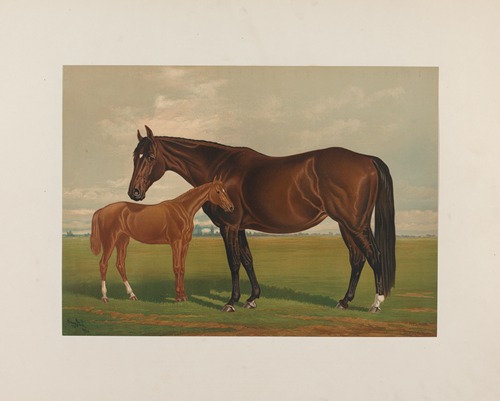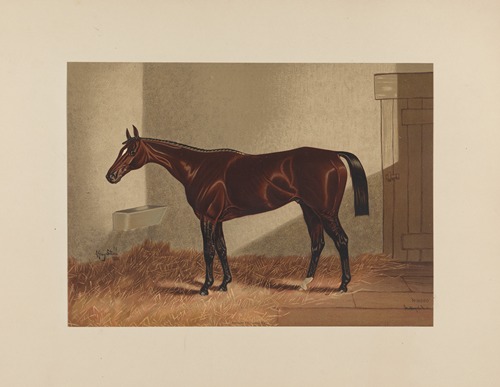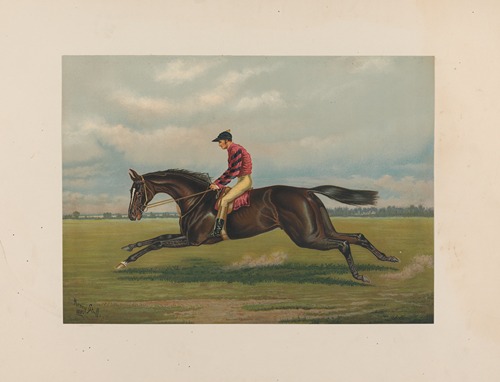
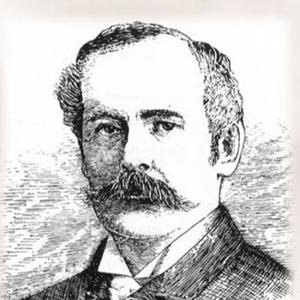
Nicholas Winfield Scott Leighton was born in Auburn, Maine in 1847 to Nicholas and Deborah Whitney Leighton. Showing an early interest in horses and art, he took up horse trading at fourteen in order to support his artistic aspirations. By the age of seventeen he had saved almost $2,000 which allowed him to move to Portland, Maine to study under one of the leading landscape painters of the time, Harrison Bird Brown. During his time in Portland, Leighton completed a number of horse portraits; however, because he averaged only $2.50 per piece he was forced to enter the furniture trade in order to support himself.
In the late 1870s Leighton moved to Boston, where his artistic ability was finally recognized. In addition to being praised by contemporary critics for his ability to portray a horse with anatomical accuracy, Leighton was considered by many to be the “Landseer of the United States,” a reference to the noted British landscape and portrait artist Edwin Henry Landseer. His work became well known locally through art shows he participated in at the New England Manufacturers and Mechanics Institute in Boston, the National Academy of Design in New York City, and the Poland Spring Art Gallery in Poland Spring, Maine. His artistic success granted him membership in both the Boston Art Club and the Paint and Clay Club.
Leighton’s work was able to reach an even wider audience with the rise in popularity of lithography. Numerous firms transferred his original paintings into mass-marketable prints. However, it was his work with Currier & Ives that brought him the most notice. More than thirty of his paintings were used by these distinguished lithographers to produce memorable prints of trotters Hopeful, Maud S., Smuggler and Edward & Swiveller, among others.
By the late 1890s Leighton was one of the best known and well-respected equine artists of his time. His most lucrative commission came from Mr. A. B. Richmond who offered $8,000 for the famous painting Sealskin Brigade, in which Richmond is portrayed supposedly driving Hopeful. That generous price is an equivalent of over $200,000 in today’s currency. The painting was so admired that William H. Vanderbilt reportedly offered Leighton an additional $2,000 for it upon its completion.
In the winter of 1897 Leighton fell ill with pneumonia. As the illness lingered, his friends noticed a decline in his mental capacities and determined that he should seek treatment. On January 3, 1898 Leighton was admitted to the McLean Insane Asylum in Waverly, Massachusetts due to his “mental trouble.” Despite the hope that rest would calm his symptoms, Scott Leighton passed away January 18, 1898 at the age of fifty.
